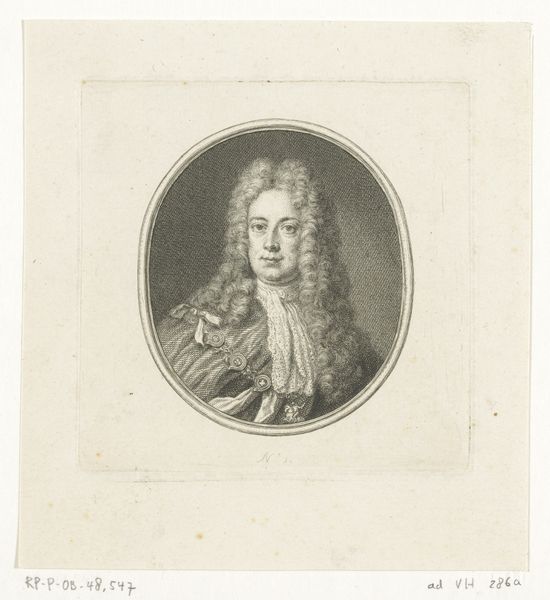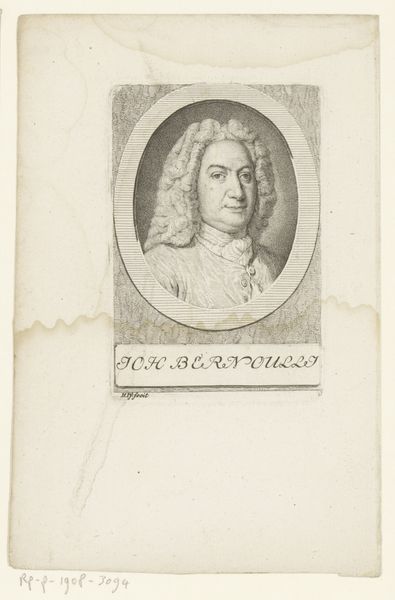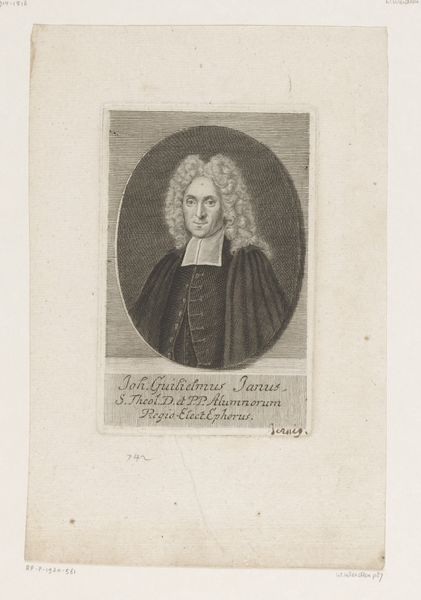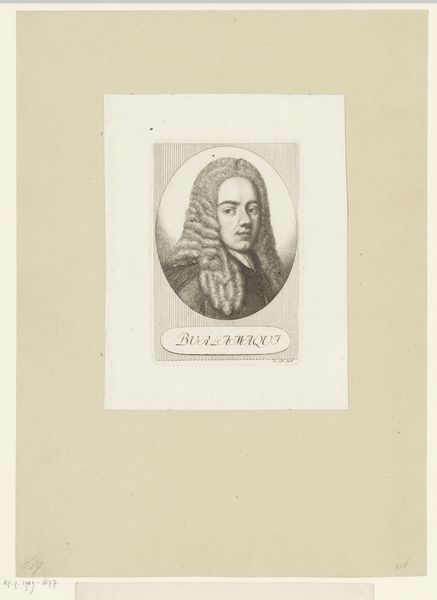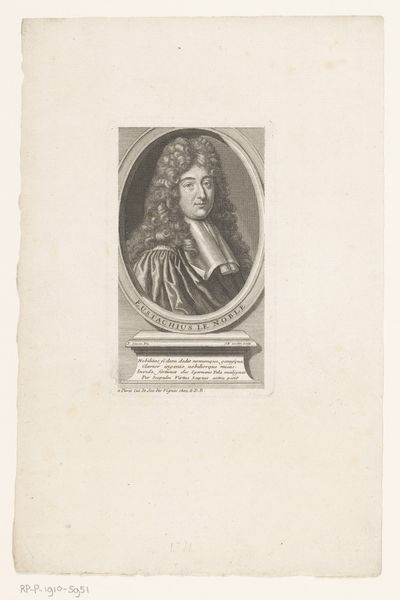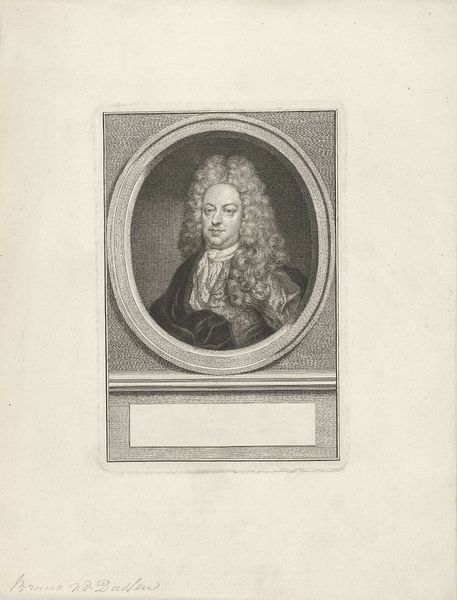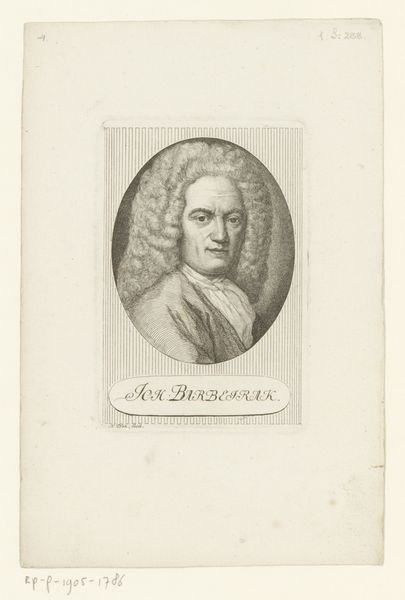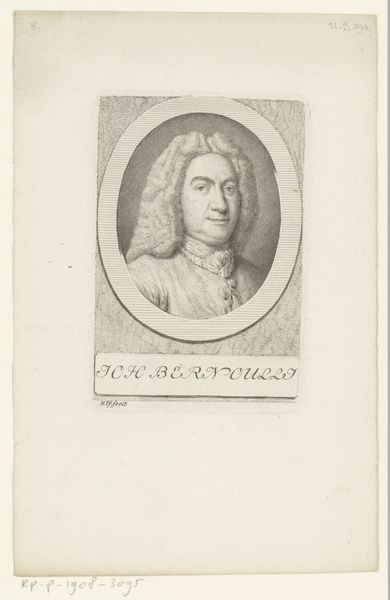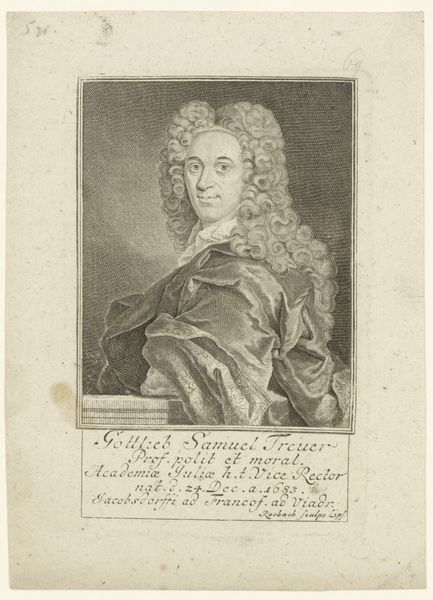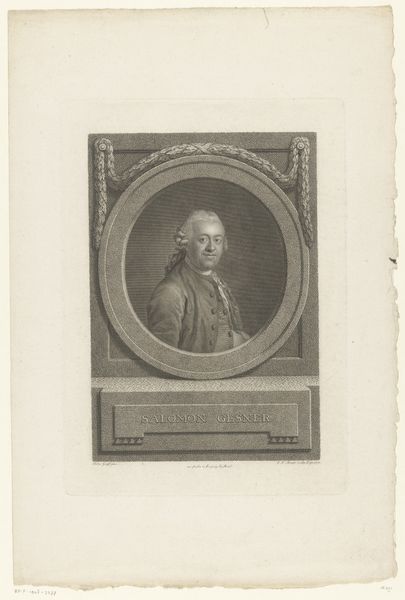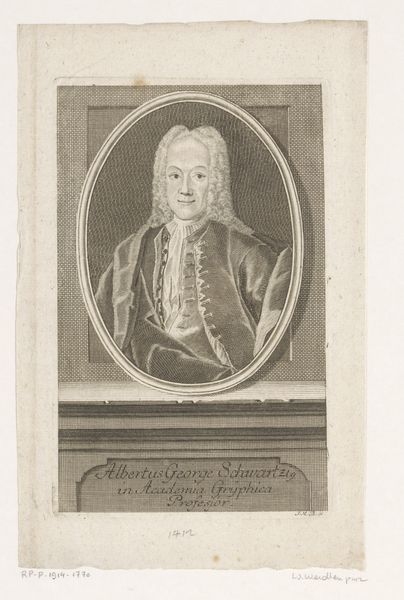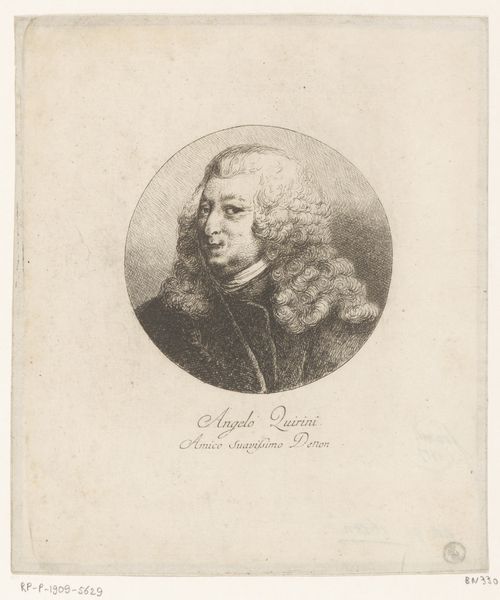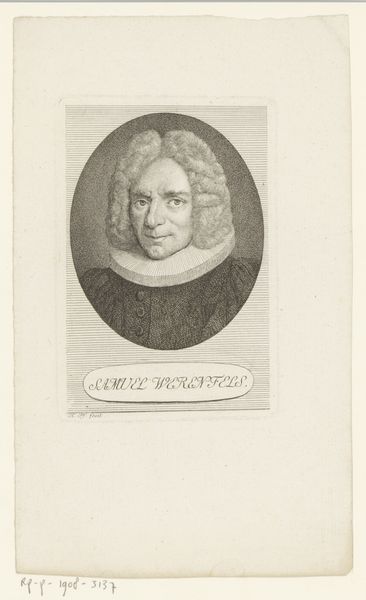
Dimensions: height 125 mm, width 83 mm
Copyright: Rijks Museum: Open Domain
Editor: This is a print entitled “Portret van Luke Schaub” made between 1759 and 1815 by Heinrich Pfenninger. It's a detailed engraving, the kind you see illustrating historical texts. It strikes me as meticulously crafted but somewhat impersonal. What can you tell me about the labor behind a piece like this? Curator: Well, consider the material constraints. Engraving demands a high degree of technical skill. Look at the controlled, precise lines. These aren't spontaneously drawn; each mark required a deliberate action, a physical exertion upon the copperplate. How might that physical process impact the value attributed to the print versus, say, a quick sketch? Editor: I see your point. There’s inherent value because of the time and skill. How does the widespread accessibility of printed materials alter the understanding of 'art' during this time period? Curator: Mass production democratizes image consumption, no? Engravings enabled wider dissemination of portraits, fashion, news and more, effectively transforming social perception through reproducibility. It also introduces notions of celebrity linked to consumer demand. So, we can then question what meanings are reproduced, or subverted, via these engravings. Editor: So, even a seemingly straightforward portrait is intertwined with questions of accessibility and economic forces. It gives a whole new dimension to understanding prints. Curator: Exactly. Analyzing art in relation to material conditions helps expose not just aesthetics but social structures. That is where our perception changes.
Comments
No comments
Be the first to comment and join the conversation on the ultimate creative platform.
